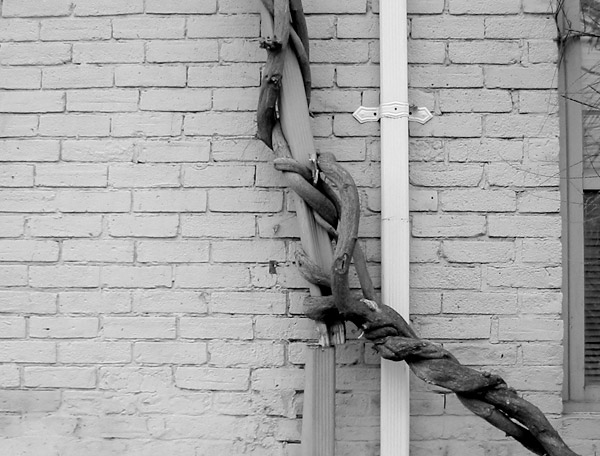
I’m an arborist. If you don’t know what that is you are not alone–it’s not even listed in my spellcheck. It’s someone who cares for trees, usually in an urban setting.
I used to be a student of sociology, but about four years ago academia began to wear me down and I decided I needed a change. When I began my new career I knew little about trees specifically and even less about nature in general. Like many people I enjoyed camping and walking in parks, but I had never really thought about the natural world or my relationship with it.
I attribute a portion of this apathy to my childhood in Mississauga. Some of my fondest childhood memories are of playing by the creek across from my grade school. My friends and I would search for snakes, make dams, climb trees and do all the other things that kids enjoy doing given the opportunity and the right environment. Then, one day, a deal was made and papers were signed in an office somewhere. Men came and cut down the trees, and then encased the stream in concrete. Shortly after, rows of houses were built on the site where I had once played. My relationship with nature, which had got off to an amicable start (although the snakes we had chased may disagree) quickly began to deteriorate. It wasn’t long before I was hanging out at Square One mall and slumming around arcades, the days of playing in the woods for hours at a time just a distant memory.
Then, at the age of 26, I became an arborist and now again find myself climbing around in trees. My relationship with nature, which I had neglected for years, has been rekindled. I have quickly grown to appreciate the wonders of trees and other living things with which we share this city. The Manitoba maple near my local convenience store that has pushed its way through a crack in the pavement and grown to a height of 50 feet has taken on new significance. Before, I, like many others, might have dismissed it as an annoying “weed tree” that should be cut down. Now, however, I marvel at how a tree that usually grows on lakeshores and stream banks has managed to not only survive, but actually thrive under such hostile conditions.
My newly cultivated insight has enabled me to see with fresh eyes the plants and animals of the natural world that continue to eke out an existence in this, the most urbanized city in Canada. However, this insight has also laid bare how at odds the daily activities of humans are with the natural world. Whether we realize it or not, almost all of our actions have some implication on the living things around us, many of them negative.
A current example is the fate of over 500 trees that can presently be found on the grounds of the Queen Street Mental Health Centre. The sprawling 27-acre site is covered with a multitude of mature trees, many of them healthy and beautiful. I had read about the efforts to save the brick wall that rings the grounds in the weekly newspapers, but had not considered the fate of the trees until one day when I was walking past the site and noticed the large billboard with the map of the proposed development. The new plans call for the demolition of all the buildings and the construction of roads that will put the health centre “back on the grid.” As I scrutinized the map it became apparent that the majority of the trees were missing. I spent the next three hours walking around the grounds counting the trees that stand where proposed buildings and roads soon will be. The total came in at around 560 trees, a sizeable number to lose from the downtown core. As the development has not yet begun the fate of the trees is still undecided, but without some hard work by concerned citizens another pocket of urban green space will likely disappear.
Our city is an enormous ever-changing entity. Nature is constantly being cut down and paved over, but in other corners it continues to fight: trees push up through concrete, vines tear pipes from walls. It is this constant give and take that I wish to chronicle in this column, and in so doing, I intend to shine new light on how our actions affect the wonders of nature that surround us.
